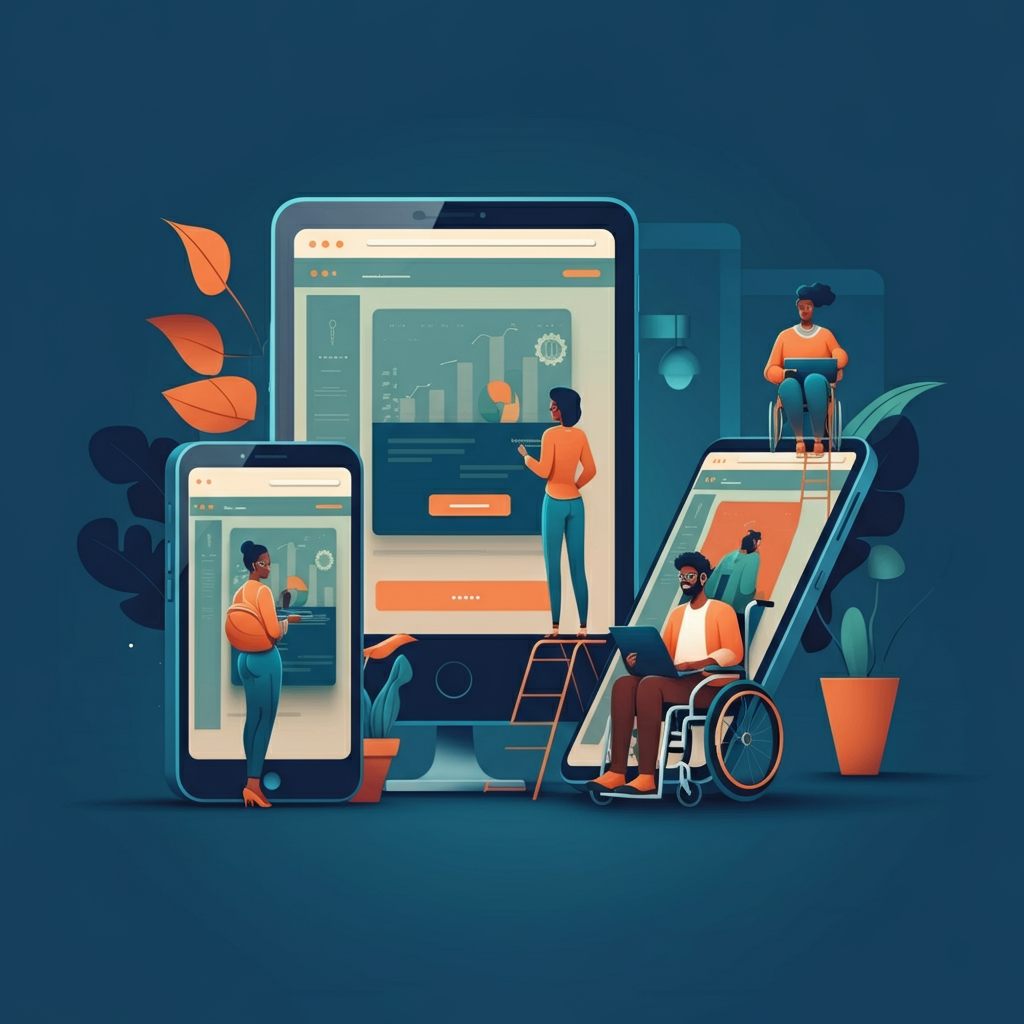The internet is integral to how we connect, work, and access information. But for millions of people with disabilities, accessing websites can be an exercise in frustration. Web accessibility ensures that everyone, regardless of ability, can use websites effectively. Yet many websites still fall short of being inclusive. Why does web accessibility matter, and how can developers and designers create truly inclusive experiences?
This guide will unpack the importance of web accessibility, the challenges of inaccessibility, practical tips for inclusive development, and the tools you can use to ensure your website meets accessibility standards. By the end of this post, you’ll be equipped to build websites that welcome every user.
What Is Web Accessibility and Why Is It Important?
Definition and Importance
Web accessibility means ensuring that websites, tools, and technologies are designed so that everyone, including people with disabilities, can perceive, understand, navigate, and interact with them. Disabilities can range from visual, auditory, and motor impairments to cognitive challenges.
Accessibility is not merely a “nice-to-have” anymore; it’s essential. It empowers users to fully engage with digital content and provides businesses an opportunity to reach untapped audiences.
Significance for Diverse Audiences
Consider a user with low vision navigating your website. Without screen reader compatibility, proper contrast, or resizable text, they may fail to access critical information. Similarly, if your website lacks subtitles, users with hearing impairments might miss out on video content.
Inclusive design benefits not just people with disabilities but everyone. For example, adding captions to videos helps users watching in noisy environments. Designing with accessibility in mind makes things better for all users.
Legal and Ethical Implications
Overview of Key Laws and Regulations
Accessibility is not just an ethical obligation—it’s a legal requirement in many countries. Laws like the Americans with Disabilities Act (ADA) in the United States or the Web Accessibility Directive in Europe mandate that digital platforms need to meet certain accessibility standards.
Web Content Accessibility Guidelines (WCAG) are the global benchmarks for accessibility. Aligning your site with versions like WCAG 2.1 ensures compliance while also keeping you safe from potential lawsuits stemming from non-compliance.
The Social Responsibility of Inclusive Design
Beyond legal obligations, there’s an ethical case for accessibility. Creating websites that everyone can use reflects a commitment to equity and social justice. An inclusive internet ensures that people with disabilities aren’t left behind in the digital age.
Barriers to Accessibility
Common Challenges Faced by Users
For someone unaware of the struggles that inaccessible websites pose, here are a few examples of barriers:
- Visual Barriers: Small text, insufficient contrast, or images without alt text.
- Auditory Barriers: Lack of subtitles or text alternatives for audio elements.
- Motor Barriers: Buttons and links too small for users with limited motor skills to click.
The Impact of Inaccessibility
When websites are inaccessible, you exclude millions of potential users, reducing engagement and alienating a significant audience. From an economic perspective, businesses miss out on valuable transactions. From a societal standpoint, inaccessibility deepens inequalities.
Best Practices for Inclusive Development
Guidelines for Web Content Accessibility
To make your website accessible, start with the Web Content Accessibility Guidelines (WCAG). Focus on the four principles of accessibility:
- Perceivable: Provide text alternatives for non-text content, such as images.
- Operable: Ensure interactive elements like forms and buttons are usable with a keyboard.
- Understandable: Make content readable and links descriptive. Avoid excessive jargon.
- Robust: Design your website to work well with assistive technologies like screen readers.
Tips for Designing Accessible User Interfaces
- Use high-color contrast for text and background.
- Avoid relying on colors alone to convey meaning. Use text or symbols too.
- Make navigation intuitive by properly structuring menus and headings.
- Provide easily resizable text.
Small tweaks like clear next-step buttons and descriptive icons go a long way in improving usability.
Tools and Technologies for Accessibility
Assistive Technologies and How They Work
Assistive technologies are devices or software that enhance the capabilities of people with disabilities. Examples include:
- Screen Readers (e.g., NVDA, JAWS): Convert on-screen content into audio for visually impaired users.
- Voice Recognition Software (e.g., Dragon NaturallySpeaking): Allows users with motor disabilities to control devices with voice commands.
Resources for Testing and Improving Accessibility
Testing accessibility doesn’t have to be complicated. Try these tools:
- WAVE (Web Accessibility Evaluation Tool): Analyze and fix accessibility issues.
- Axe: Browser extension for automated WCAG testing.
- Keyboard Testing: Navigate your website using only a keyboard to spot operability problems.
Case Studies and Success Stories
Companies and Websites Embodying Accessibility
- BBC Accessibility: The BBC sets a high standard, ensuring usability for all through thoughtful design and compliance with WCAG.
- Microsoft: Their suite of accessible tools is built on a foundation of inclusivity, creating equal opportunities for users.
Benefits of Inclusive Design on User Engagement
Sites that prioritize accessibility see tangible benefits, from increased engagement and customer loyalty to improved SEO. Google ranks accessible websites higher because of better user experience and optimized page features, such as alt text or clear menu navigation.
The Future of Web Accessibility
Emerging Trends and Technologies
Web accessibility is constantly evolving. AI-powered tools and automation are making it easier for developers to ensure compliance. Natural language processing (NLP) technology powers real-time captioning, while AR/VR advancements include tools that cater to abilities across the spectrum.
The Continuous Journey Towards Full Inclusion
Web accessibility isn’t a one-time task—it’s a continuous process. Regular audits and updates ensure that websites remain inclusive despite changes in content, user needs, or technology.
Taking the First Step Towards Inclusive Development
Creating accessible websites starts with awareness and a commitment to change. By following best practices, leveraging tools, and implementing strategies discussed, you can impact lives and empower users.
The future is inclusive. Start building it today. Whether you’re a developer, content creator, or UX designer, your role in promoting accessibility cannot be overstated.
Looking for more? Explore deeper resources or join a community dedicated to inclusive design best practices. Together, we can make the web a place where everyone belongs.

